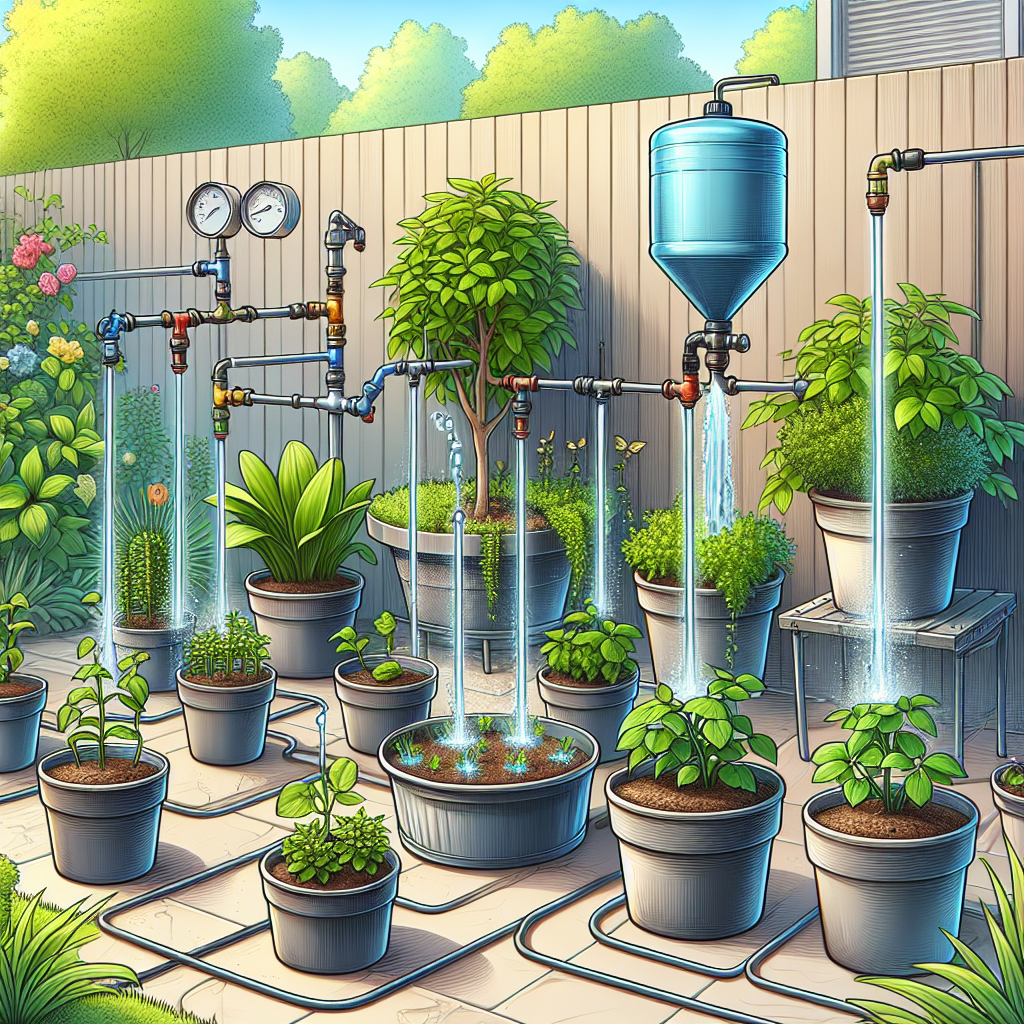Are you looking to maximize the efficiency of your container gardening through slow drip irrigation? Slow drip irrigation is a fantastic way to ensure your plants receive the perfect amount of water they need, without the risk of over or under-watering. However, achieving successful slow drip irrigation in containers can be a bit tricky if you’re not sure where to start.
In this comprehensive guide, you’ll find valuable tips and tricks to help you master the art of slow drip irrigation in your container garden. From choosing the right containers and setting up a drip system to proper maintenance and troubleshooting common issues, this article will provide you with all the information you need to keep your plants happy and healthy. So grab your watering can and let’s dive into the world of successful slow drip irrigation in containers!
**Choosing the Right Containers**
When it comes to successful slow drip irrigation in containers, choosing the right pots is key. Opt for containers that are made of porous materials such as terracotta or unglazed clay. These materials allow for better air circulation and help prevent waterlogging, which can be detrimental to plant roots. Additionally, make sure your containers have drainage holes at the bottom to allow excess water to escape.
**Setting Up Your Drip System**
Once you’ve selected the perfect containers for your plants, it’s time to set up your drip irrigation system. Start by installing a pressure regulator on your outdoor faucet to ensure a consistent flow of water. Next, connect a timer to control when your drip system will water your plants. Position the drippers or tubing so that they deliver water directly to the base of each plant, ensuring that every plant receives adequate hydration.
**Choosing the Right Watering Schedule**
Determining the right watering schedule for your container garden can be a bit tricky since different plants have varying watering needs. As a general rule of thumb, aim for deep, infrequent watering rather than frequent shallow waterings. This encourages plants to develop deep root systems that are more resilient during dry spells. Monitor your plants regularly and adjust your watering schedule based on their individual requirements.
**Proper Maintenance**
Regular maintenance is key to successful slow drip irrigation in containers. Keep an eye out for clogged drippers or tubing and clean them regularly with a mixture of vinegar and water. Check for leaks or any other issues that may arise with your system and address them promptly. Additionally, consider using organic mulch around your plants to help retain moisture in the soil and reduce evaporation.
**Troubleshooting Common Issues**
Even with careful planning and maintenance, issues may still arise with your slow drip irrigation system. One common problem is uneven watering due to clogged drippers or tubing. Check each dripper individually and replace any that are not functioning properly. Another issue could be overwatering if you notice excessive moisture pooling at the base of your containers; adjust your watering schedule accordingly.
**FAQs**
1) What is slow drip irrigation?
Slow drip irrigation is a method of providing controlled amounts of water directly to plant roots over an extended period.
2) How often should I water my container garden with slow drip irrigation?
The frequency will depend on various factors such as plant type, soil type, weather conditions, etc.
3) Can I use slow drip irrigation on all types of container plants?
Yes, slow drip irrigation can be used on most container plants; just adjust the watering schedule based on individual plant needs.
4) Do I need any special equipment for slow drip irrigation?
You will need some basic equipment such as tubing, drippers, pressure regulators, timers, etc., which are easily available at gardening stores.
5) Can I use rainwater for my slow drip irrigation system?
Yes! Rainwater is an excellent natural source for irrigating container gardens; just make sure it’s free from contaminants before using it on edible plants.
In conclusion, successful slow drip irrigation in containers requires careful planning, regular maintenance, and proper attention to detail. By following these tips and guidelines outlined in this article, you’ll be well on your way to creating a healthy and thriving container garden that will impress even seasoned gardeners!













